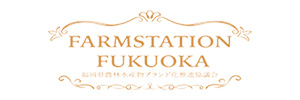〈Working On the Water〉 Buzenkai Hitotsubu Oysters from Tsunemi
Raising Pacific Oysters in the Buzen Sea
Oyster culture rafts sit on the waters offshore the Sone tidal flat within close view of Kitakyushu Airport. The oysters being cultivated here are sold under the brand Buzenkai Hitotsubu oysters (Buzen Sea oysters), plump oysters from the Buzen Sea. This is the birthplace of oyster aquaculture in Fukuoka Prefecture. A unique culturing technique has been developed to grow these delicious oysters rapidly.
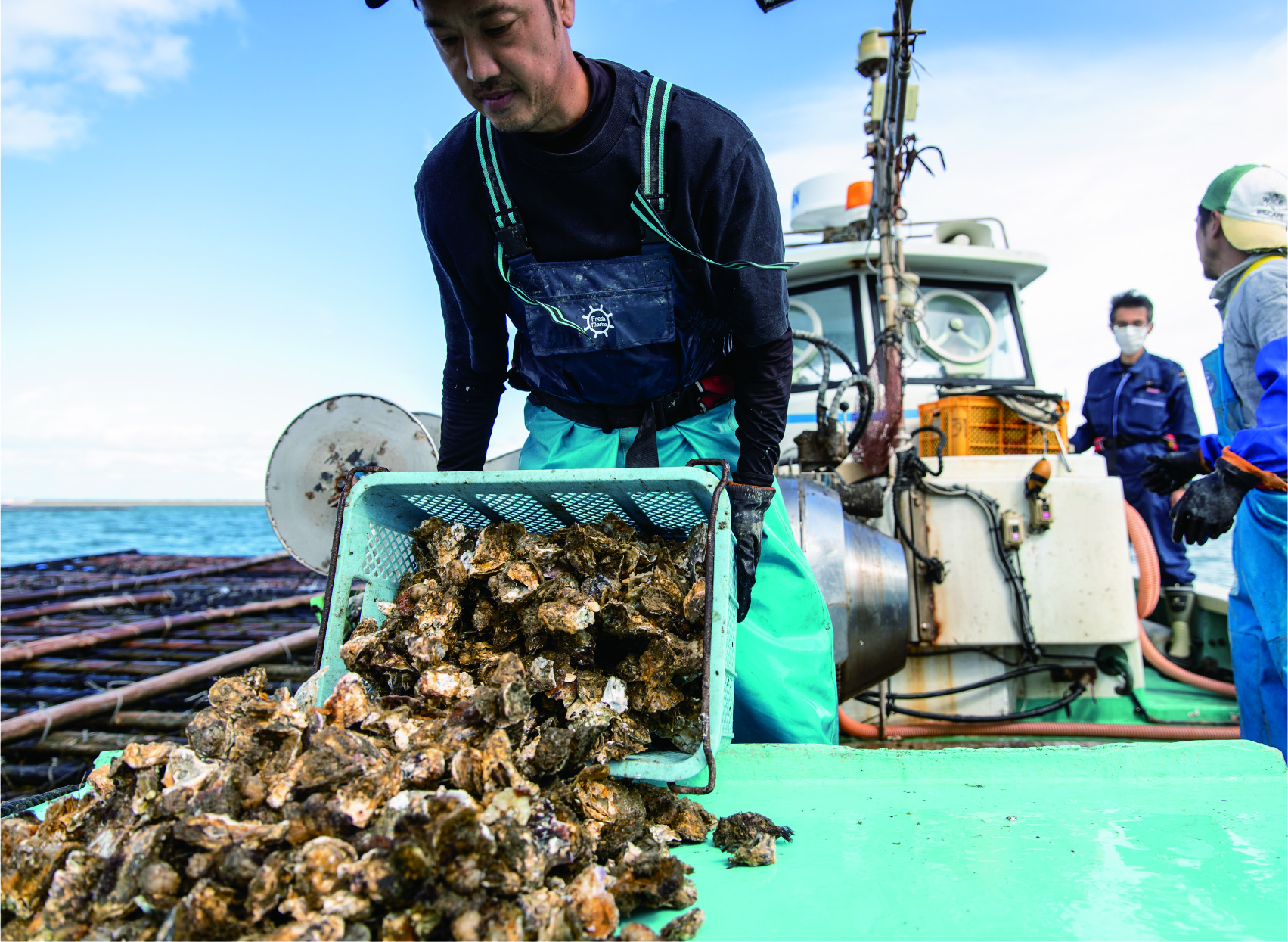
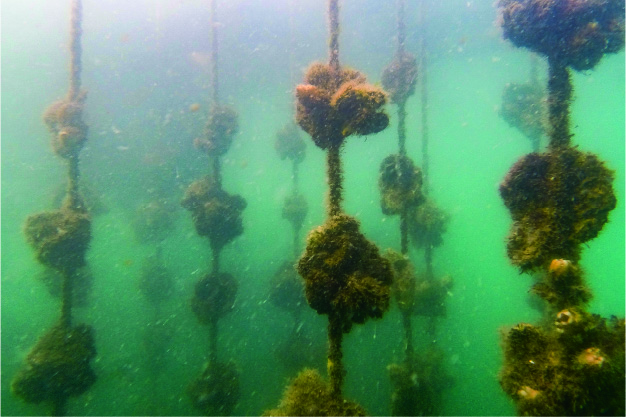
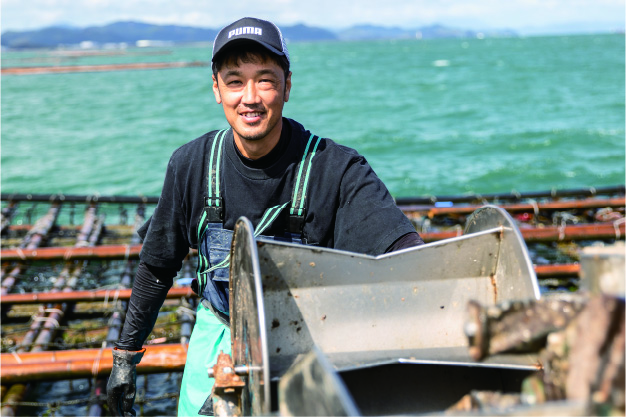

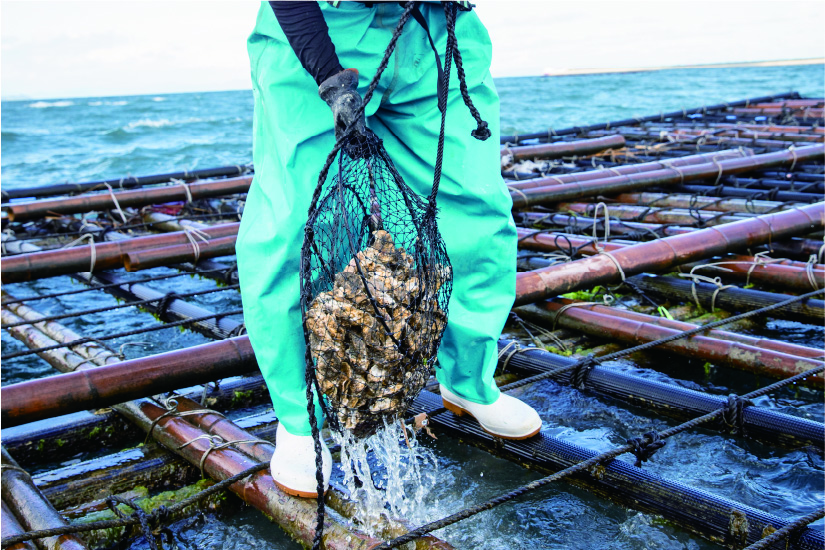
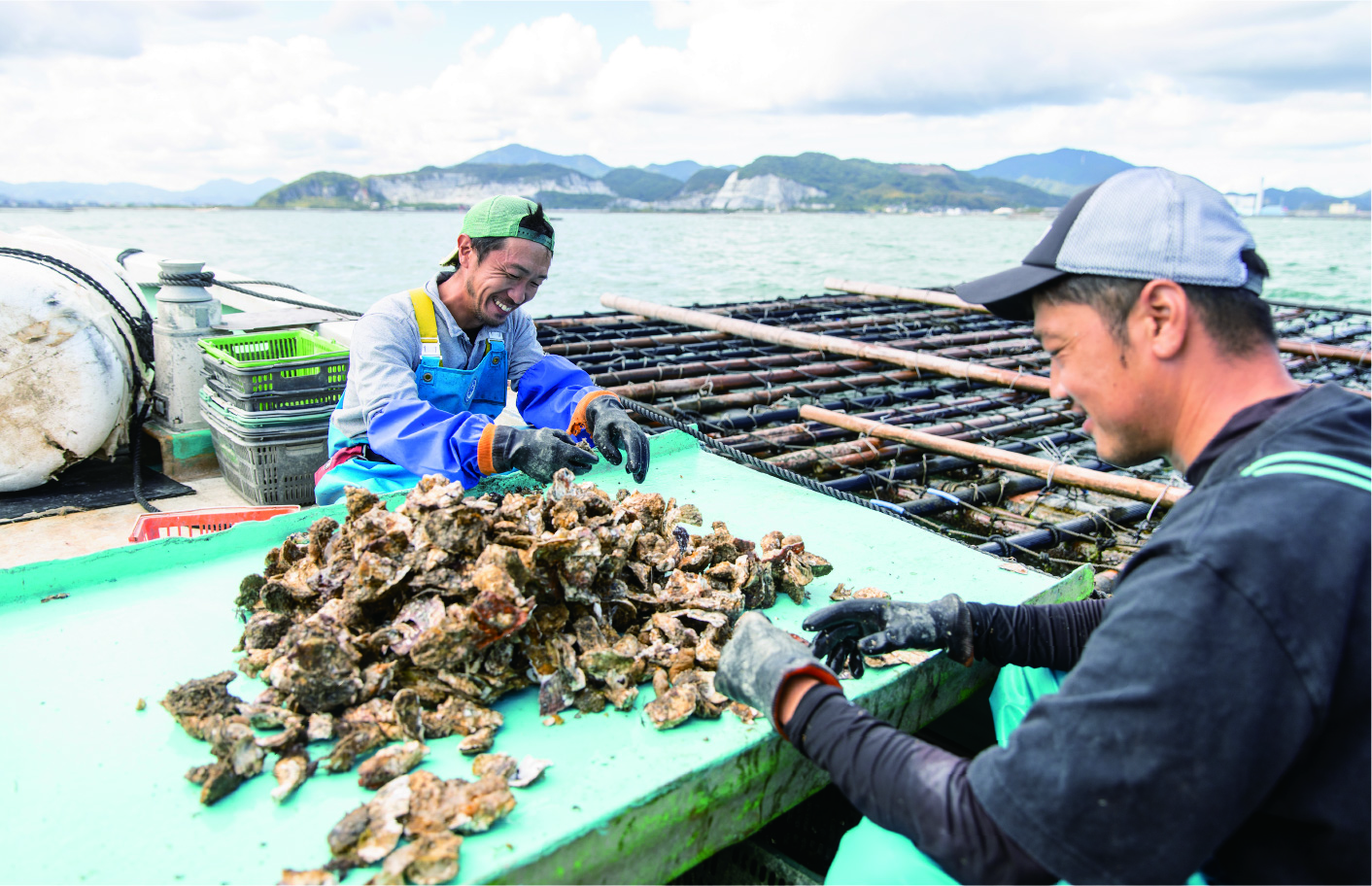

The Sone tidal flat, the largest of its kind in Kitakyushu, stretches to the east of the municipality. About 5 km out to sea is Kitakyushu Airport, built on a manmade island. The oyster rafts float in the middle, producing the best oysters Kitakyushu has to offer, Buzen Sea oysters. Oysters are widely cultivated in the Buzen Sea, and this is the prime location for those that earn the Fukuoka brand.
“In the late 1970s, my father and others were the first ones to start culturing oysters in Fukuoka Prefecture,” says Hidetoshi Eguchi, the man in charge of oyster aquaculture at the Tsunemi branch of the Northern Buzen Sea Fishing Cooperative. This area had originally thrived on the cultivation of nori seaweed. Oysters were taken up as a response to dropping production of nori. The artificial island built for Kitakyushu Airport became a positive that also led to the success, according to Eguchi.
“The airport serves as a huge breakwater for us. When seas are calm, oysters open their shells to feed for longer, leading to faster growth.” Sure enough, oysters that take two years to mature in other production areas require just half a year here to become large enough for consumption.
The unique feature of Buzen Sea oysters is that they are sold in the shell. Since one cannot see how plump the oysters are in the shell, the fishermen found a unique solution. Although it takes a lot of time and effort, around September to October, the oysters growing on the hanging ropes are removed and placed in net baskets one by one.
About a month later, the baskets are raised out of the sea, and the sea squirts, barnacles, and other creatures that have attached themselves to the shells are removed, either by hand or using machines, and the oyster shells are returned to the water. “Those things eat the same food as the oyster, so by cleaning the shells, the oysters have much more to feed on and when the time comes to ship them, they have grown nice a
Oyster cultivation takes time and effort, but the oysters are finally ready to harvest between the start of December and the end of March. Until that time we hope they feed well and grow big and delicious.



